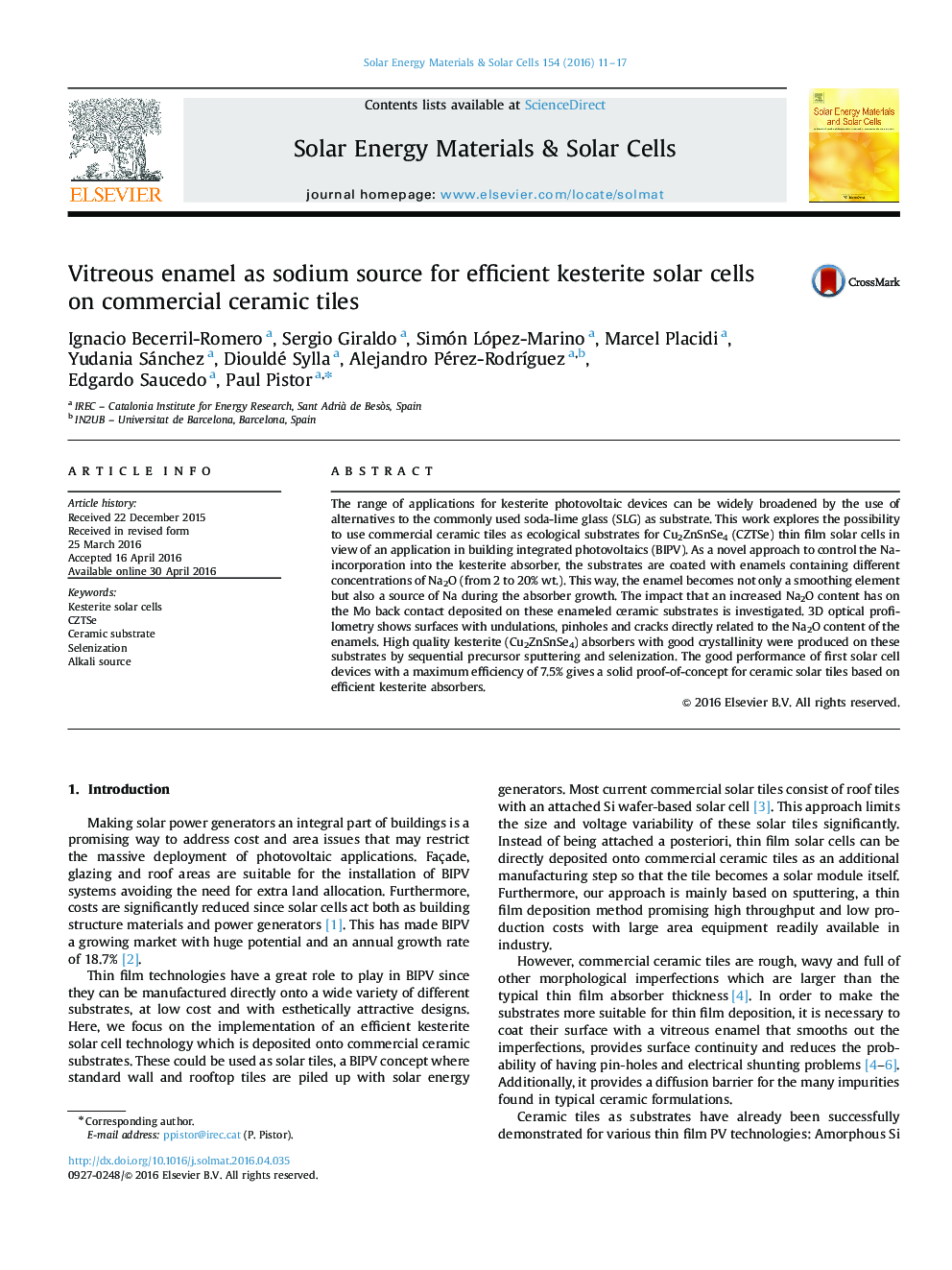| Article ID | Journal | Published Year | Pages | File Type |
|---|---|---|---|---|
| 77555 | Solar Energy Materials and Solar Cells | 2016 | 7 Pages |
•Proof-of-concept of ceramic substrate for efficient solar tile applications with low-cost, abundant thin film photovoltaics.•Innovative substrate design with vitreous enamel as smoothing layer and alkali source.•New record devices for kesterite solar cells on ceramic substrates with 7.5% efficiency.
The range of applications for kesterite photovoltaic devices can be widely broadened by the use of alternatives to the commonly used soda-lime glass (SLG) as substrate. This work explores the possibility to use commercial ceramic tiles as ecological substrates for Cu2ZnSnSe4 (CZTSe) thin film solar cells in view of an application in building integrated photovoltaics (BIPV). As a novel approach to control the Na-incorporation into the kesterite absorber, the substrates are coated with enamels containing different concentrations of Na2O (from 2 to 20% wt.). This way, the enamel becomes not only a smoothing element but also a source of Na during the absorber growth. The impact that an increased Na2O content has on the Mo back contact deposited on these enameled ceramic substrates is investigated. 3D optical profilometry shows surfaces with undulations, pinholes and cracks directly related to the Na2O content of the enamels. High quality kesterite (Cu2ZnSnSe4) absorbers with good crystallinity were produced on these substrates by sequential precursor sputtering and selenization. The good performance of first solar cell devices with a maximum efficiency of 7.5% gives a solid proof-of-concept for ceramic solar tiles based on efficient kesterite absorbers.
